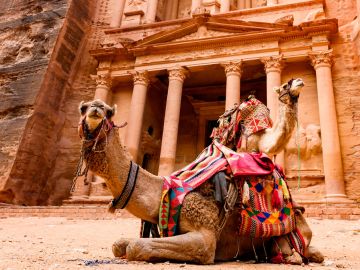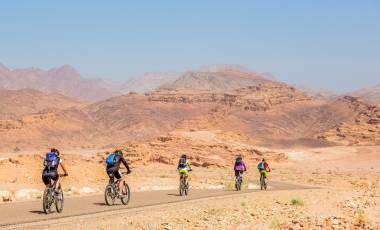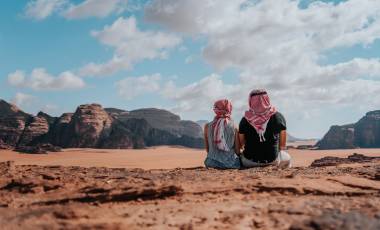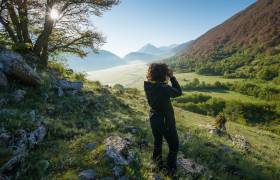From the striking carved Treasury in the Rose Red City of Petra to the other-worldly desert landscapes in the Wadi Rum, it comes as no surprise that Jordan has continued to enchant visitors for centuries. Inhabited by humans since the Palaeolithic period, you’ll find that every traveller has left their mark on this beautiful Middle Eastern gem. With most of their monuments remaining remarkably intact, you can still visit Roman amphitheatres, Crusader castles and cities filled with intricate Christian mosaics on our adventures in Jordan.
Steeped in history and shrouded in folklore from Nabatean tradesmen, Muslim armies, Roman legionnaires, and zealous Crusaders passing through, no one knows these fascinating legends better than our local expert guides. This month, we’re proud to be working closely with the Jordan Tourist Board and got in touch with our leaders on the ground so they could share their most fascinating local legends to inspire you to come and see Jordan for yourself.
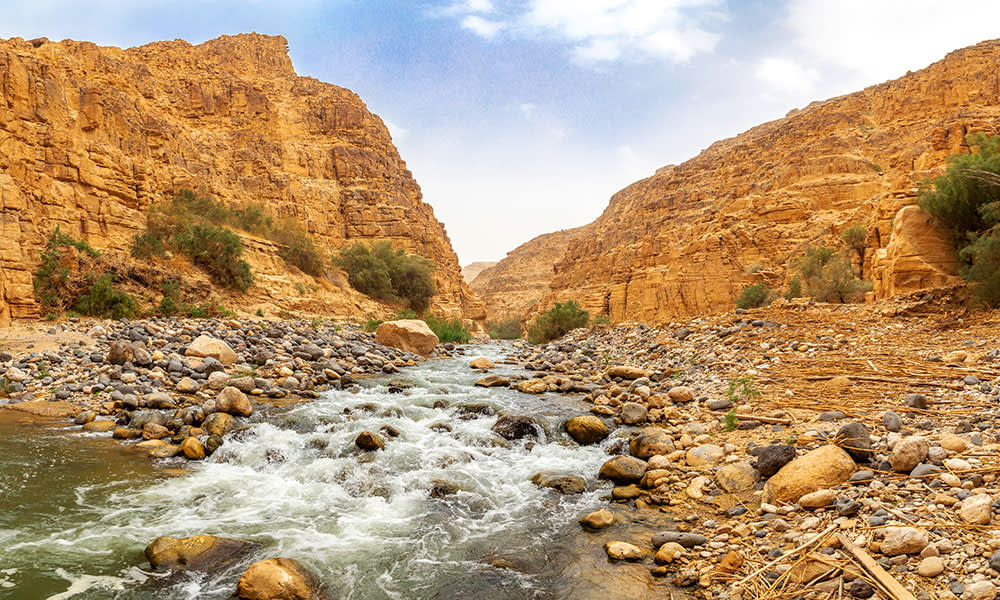
When asked what remote sites in Jordan they’d recommend travellers to go and visit, one of our local leaders, Mohammad Abdulaziz, smiled and answered, “It may not be one of the most unknown sites, but one of my favourites that’s out of the way, is the Wadi al-Mujib water canyon. Starting in the Desert Highway and flowing until it joins the opening of the Dead Sea, this is easily one of Jordan’s most spectacular sandstone canyons.”

Legends surrounding the Wadi Rum desert are plentiful. But our local leader, Abdullah Marashdeh, divulges one that travellers may not know. “Legend has it, that the reason why there are huge, deep underground water areas in the southern part of Jordan, is because camels came from all across the world to bring water, hiding it under the Wadi Rum for the Jordanian people to find”.
Abdullah also said that some of his favourite moments in the desert are when he takes his travellers to the best spots in the Wadi Rum to catch the orange-hued sunsets, changing locations depending on the time of year. He mentioned that one of his special spots to take his group is, “to the summit of a mountain that’s located behind the Um Fruth Rock Bridge – the sunset panoramas are incredible from here.”
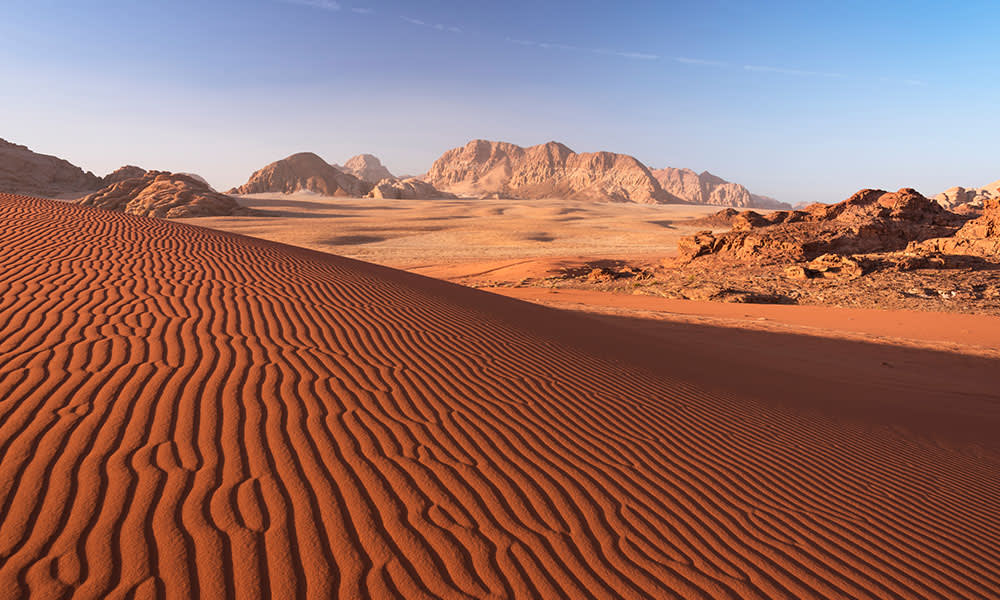
The Wadi Rum’s landscapes were thrust into the international spotlight by director, David Lean, back in 1962 with his famous movie, “Lawrence of Arabia”. Ever since it has remained a popular filming location for movies like, “The Martian”, “Rogue One” and most recently, “Dune”. Some have even nicknamed it, “Valley of the Moon” because of its alien-like mountains that reach 1,700 meters (5,600 feet) above sea level. However, the Wadi Rum’s name is believed to have been derived from the “Iram of the Pillars”, a lost city mentioned in the Quran. Others believe the word “Rum” has Aramaic roots which means ‘high’ or ‘elevated’.
Wherever the origins of its name may lie, the Wadi Rum Protected Area is one of the world’s best open-air museums, boasting over 25,000 petroglyphs (rock carvings), 20,000 inscriptions, and 154 archaeological sites. Our local leader, Nida, comments, “When hunters, shepherds, farmers and traders settled here thousands of years ago, they struggled to survive in its harsh environment”. He continued, “and when the Nabateans occupied the Wadi Rum, they left behind many monuments and inscriptions, including a temple known today as the ‘Nabatean Temple’. Research indicates that the first human settlement in Wadi Rum dates back to some 10,000 years ago and that surprisingly the area was full of freshwater springs.”
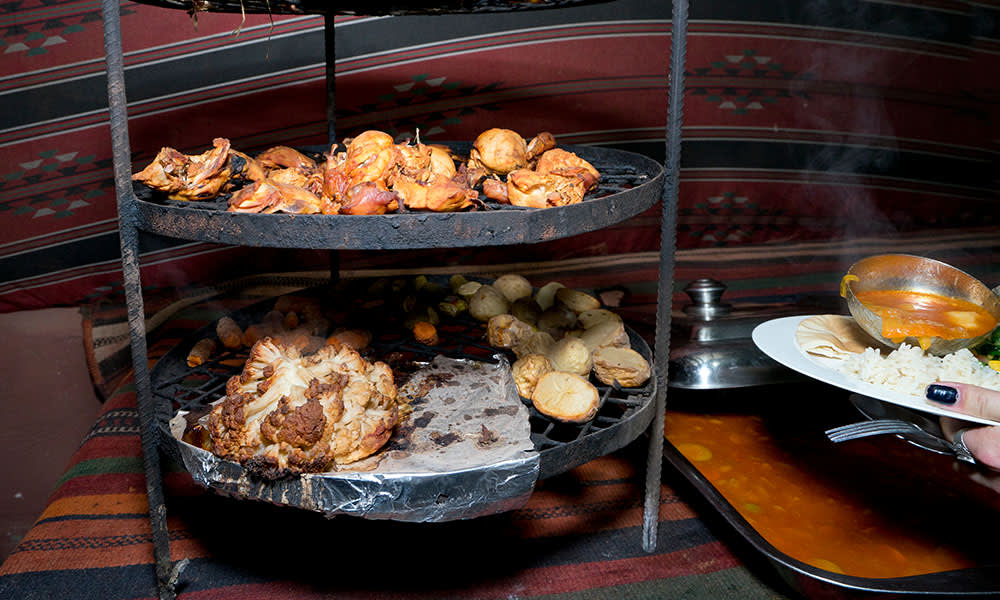
During our Petra and Wadi Rum by Bike trip and our Week in Jordan adventure, you’ll get the opportunity to try a local Zarb dinner and sleep in a traditional Bedouin camp deep in the Wadi Rum underneath the stars. The leaders explained that it’s important to Bedouin communities to light a fire every night in their camps. The reasoning behind this is so that any lost souls in the desert know where they can go to find safety from the elements.
Abdullah Marashdeh elaborated on the evening commenting, “When we all sit down to enjoy a Zarb meal together, we are enjoying one of the most beautiful and delicious treasures of the Bedouin culture. For centuries, Bedouins cooked their food underground in earth ovens. This way of cooking does not require much equipment, which was essential because of their nomadic lifestyle, roaming the desert in search of water and pastures.”
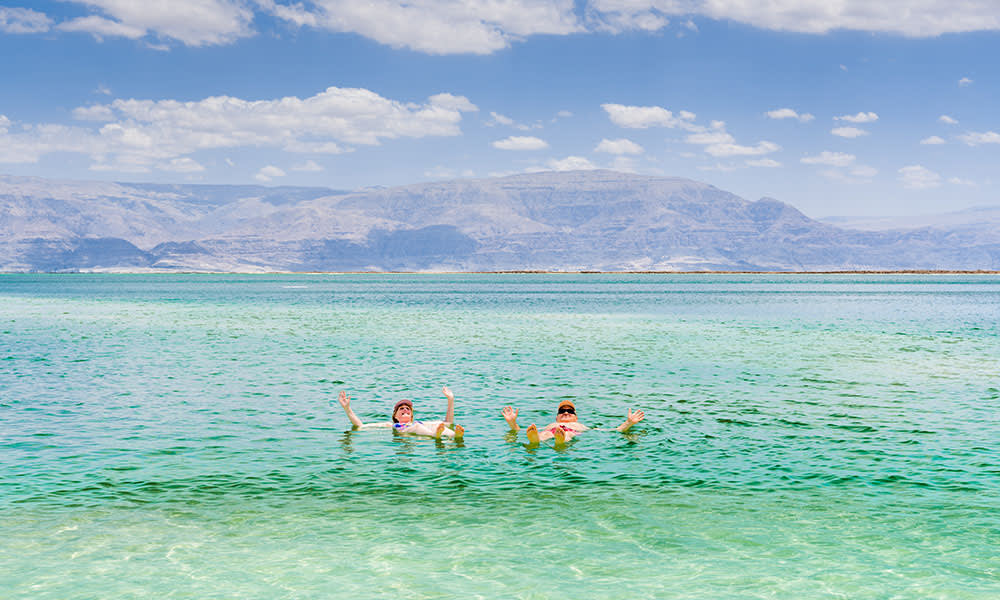
Another fascinating thing we do on our adventures in Jordan is a floating experience in the Dead Sea. One of our local leaders, Moayad Mesmar, mentioned that “It is believed Cleopatra used the mud and water of the Dead Sea, which was one of the secrets of her outstanding beauty”.
Abdullah Marashdeh echoed this by explaining that, “the unusually warm, incredibly buoyant and mineral-rich waters have attracted visitors since ancient times, including King Herod the Great and the beautiful Egyptian Queen, Cleopatra. All of whom have bathed in the Dead Sea’s rich, black, stimulating mud and floated effortlessly on their backs while soaking up the water’s healthy minerals under the Jordanian sun.” He continued, “The Dead Sea is ten times saltier than any other sea in the world, and it’s also believed that the sea was close to the baptism site of Jesus Christ.”

Aside from floating in the Dead Sea, you can also enjoy snorkelling over the coral reefs in the Red Sea on a couple of our trips, including our Hidden Treasures of Jordan. Our local leader, Nidal, explains there is plenty of vibrantly coloured fish to spot on this snorkelling opportunity, “The most famous types of fish that can be seen hidden in the corals near the beach of Aqaba are butterflyfish, bright Royal fish, Clownfish, lionfish and angelfish.”
And last but not least, a visit to Jordan simply isn’t complete without exploring its impressive World Wonder: The Rose Red City of Petra. Petra is full of secrets, which is one of its greatest charms, our local leader Moayad Mesmar explains, “Petra hasn’t revealed all of its jewels yet, I believe there are still untold stories and discoveries that are lying deep under the sand.”
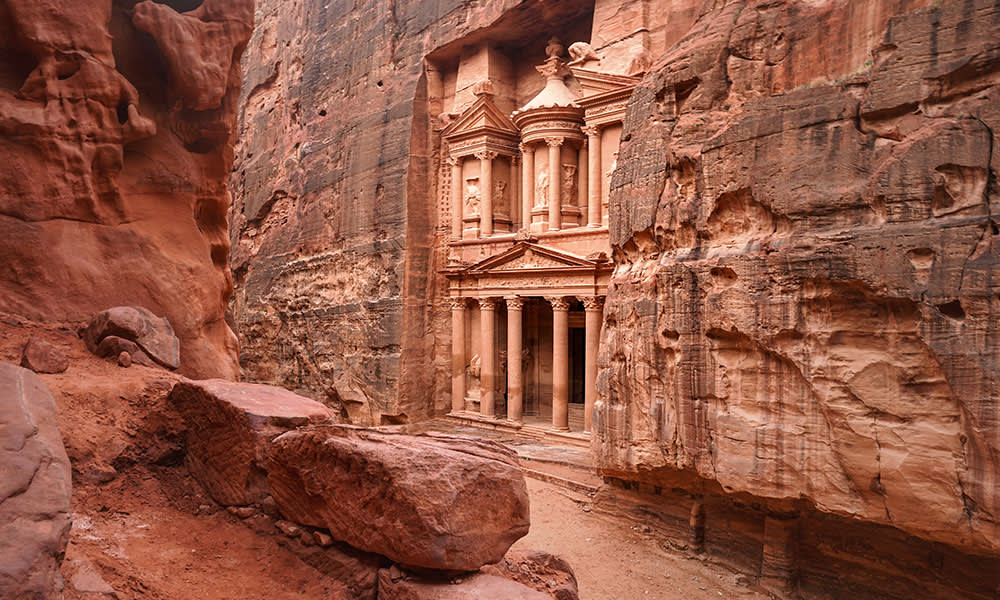
Another local leader, Nidal, says the beauty of the lost city of Petra, lies in its unique discovery by the western world. “With the beginning of orientalist trips to the Arab world in the nineteenth century, Petra was discovered in 1812 by the Swiss orientalist Johann Ludwig Burckhardt, who studied the Arabic language and history of Islam in Syria. He came to Petra claiming to be a Muslim from India and after he disguised himself in Islamic dress, the residents allowed him to enter Petra. After his incredible adventure, he published a book in 1828, “Journeys in Syria and the Holy Land”, which contains fascinating hand-drawn pictures of Petra”.
To get the best view, Nidal explains that he takes his group, “to a high viewpoint where it is possible to view the entire monastery and the surrounding area, as well as Wadi Araba from the same place.”
So, have our local leaders captivating legends about Jordan inspired you to book an adventure in the Middle East? Take a look at our Jordan trips here.
